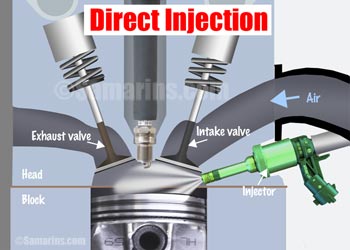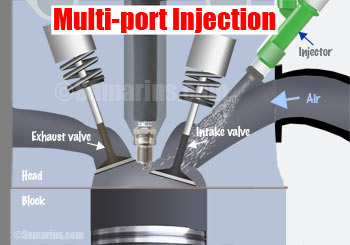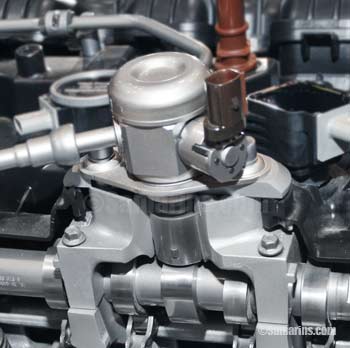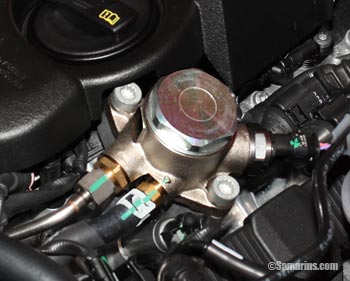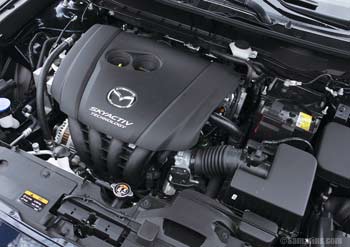Direct Injection in a car: How it works, pros and cons, maintenance, reliability
Updated: August 01, 2022
A conventional electronic fuel injection has been used in mass-produced cars since the late 1950's. Until recently, almost all gasoline cars had a multi-point (multi-port) fuel injection, or MPI.
Overall, MPI has proven to be a very reliable technology. Under tighter fuel economy regulations and stricter emission laws, car manufacturers gave been implementing fuel-saving technologies The gasoline direct fuel injection (DI or GDI) is one of them.
A direct injection technology improves the fuel economy by 10-20 percent, but is it reliable? Does a car with a direct-injection cost more to maintain? What are the pros and cons? First, let's see how it works, compared to a conventional multi-port fuel injection:
How Multi-Port Injection and Direct Injection work
In a gasoline engine with a conventional multi-port fuel injection, an electric fuel pump located inside the fuel tank delivers gasoline to the engine fuel rail. The fuel pressure is relatively low: 35-60 psi. The fuel rail distributes the fuel to the injectors.Each cylinder has one fuel injector (green in the image). When commanded by the engine computer, a fuel injector sprays fuel into the intake port where it mixes with air. From there, the air /fuel mixture enters the cylinder through an open intake valve during an intake stroke.
In a direct injection, there are two fuel pumps: the low-pressure fuel pump located inside the tank and the high pressure fuel pump installed on the engine. The low-pressure fuel pump delivers fuel to the high-pressure fuel pump first.
A high-pressure fuel pump is a mechanical pump driven by one of the engine camshafts. It supplies fuel under very high pressure (over 2,000 psi) to the fuel rail. A fuel rail distributes the fuel to the high-pressure fuel injectors; one per each cylinder.
The high-pressure fuel injector vaporizes fuel directly into the combustion chamber during the compression stroke, when the piston is close to the top, see the diagram at the top.
Do direct-injected engines require more maintenance?
If you check a maintenance schedule for a direct-injected car, you won't likely find any additional services for the direct injection. There are however, a few differences. First, a direct injected engine is more sensitive to the gasoline quality, considering the design.A high pressure fuel pump is driven by a camshaft and this friction point is lubricated by engine oil. This means that a low oil level or lack of oil changes can cause problems, but this is true for any engine.
The one problem area specific to direct injection is a carbon buildup on the back of intake valves and on the injectors. Why does this happen?
In any engine, oil vapors from a crankcase ventilation system flow through the intake valves. However, In a conventional MPI fuel injection, injectors spray directly on intake valves, "washing" them off.
In a direct-injected engine, fuel is sprayed "under" valves, see the images above. This means that over time, oil vapors from the ventilation system passing through intake valves form carbon deposits on the backside of the valves and on the tips of the injectors.
This problem is more noticeable in high-mileage engines, especially if the vehicle is used for frequent short trips. A turbocharger can also make things worse, because at higher mileage, oil leaking from turbocharger seals also ends up in the intake.
This means, that in some direct-injected cars, intakes valves may need cleaning at higher mileage. If you take your direct-injected vehicle for a tune-up, a dealer or an independent repair shop may offer you a fuel induction service or intake valve cleaning service.
Many BMW owners, for example, know about "Walnut blasting" which is a way to clean the intake valves with black walnut shell media ($450-$700). Sometimes intake valves may need to be cleaned manually and this could cost a bit more.
We spoke to an owner of a repair shop specializing in German cars who recommends cleaning the intake valves every 75,000 miles.
Advertisement
The high pressure fuel pump itself is not uncommon to fail in many cars and the part is quite expensive.
That said, many direct-injected cars don't have any problems. We also found several service bulletins where different auto makers recommend using TOP TIER Detergent Gasoline to avoid problems with a direct injection: Check www.toptiergas.com for the list of fuel suppliers that offer TOP TIER Detergent Gasoline.
There is some progress in DI technology too. Toyota, for example, uses D-4S Fuel Injection in a number in recent Toyota and Lexus vehicles. In the D-4S engine, each cylinder has both, a direct injector and a port injector.
Ford also implemented a dual fuel delivery system with two fuel injectors per cylinder in some of the latest models. It's called PFDI- Port Fuel (PFI) and Direct-Injection (DI). This dual-injector technology should eliminate problems with carbon buildup on the intake valves.
Are direct-injected engines reliable?
In general, the more complex technology, the more can go wrong, although some cars have more problems related to direct injection than others. For example, BMW has had some problems with high pressure pumps and injectors and even issued a recall for a high pressure fuel pump in some models.Volkswagen/Audi had issues in their gasoline 2.0L-turbo FSI (Volkswagen term for direct injection) motor with the high pressure fuel pump follower/cam lobe wearing out. However, for example, Mazda Skyactiv direct-injected gasoline engines generally hold up well with regular oil changes. This means, check the reliability for any car individually.
Where can you check the reliability ratings of a car? First, there is Consumer Reports. We find their ratings to be accurate. To access their ratings online, you would need a paid subscription, but you might be able to find a copy of their printed magazine in a local library. J.D. Power also offers dependability ratings. Check CarComplaints.com to know which cars have more problems.
Pros and Cons of Direct Fuel Injection
To summarize: drawbacks of a direct injection include a more complex design with expensive components, tougher requirements to the gasoline quality and potentially greater repair costs at higher mileage due to problems mentioned above. Often, some of these problems are difficult to diagnose, adding to the repair bill.The main benefits are better fuel economy, lower emissions and potential for more power.
What to look for when buying a used car with a direct-injected engine?
When checking a car with direct injection, watch out for the Check Engine light staying on after the engine is started. Avoid a car if there is a gasoline smell noticeable under the hood.A low engine oil level can be an indication of excessive oil consumption. Too high oil level and a gasoline smell may indicate gasoline presence in engine oil, which is also not a good sign. When test-driving the car, watch out for abnormal engine noises, as well as lack of power, misfiring, rough idle or hesitation.
Stalling is another sign of engine troubles. A blue or white smoke from the exhaust should tell you to pass on the car. Read more: How to inspect a used car.
We would recommend having the vehicle inspected by a trusted mechanic before signing the contract. If it's a German car, take it to the mechanic specializing in German cars. Avoid the car if it shows signs of lack of maintenance.
Read Next:
Pros and cons of turbo engines
Pros and cons of the CVT transmission
What mileage is OK for a used car?
How to inspect a used car - illustrated guide
Signs of a collision repair, rust or paint job when buying a used car
How to check an engine when buying a used car
Reviews of popular used cars including problems to watch out for.
Reviews of popular used SUVs.
Pros and cons of turbo engines
Pros and cons of the CVT transmission
What mileage is OK for a used car?
How to inspect a used car - illustrated guide
Signs of a collision repair, rust or paint job when buying a used car
How to check an engine when buying a used car
Reviews of popular used cars including problems to watch out for.
Reviews of popular used SUVs.
